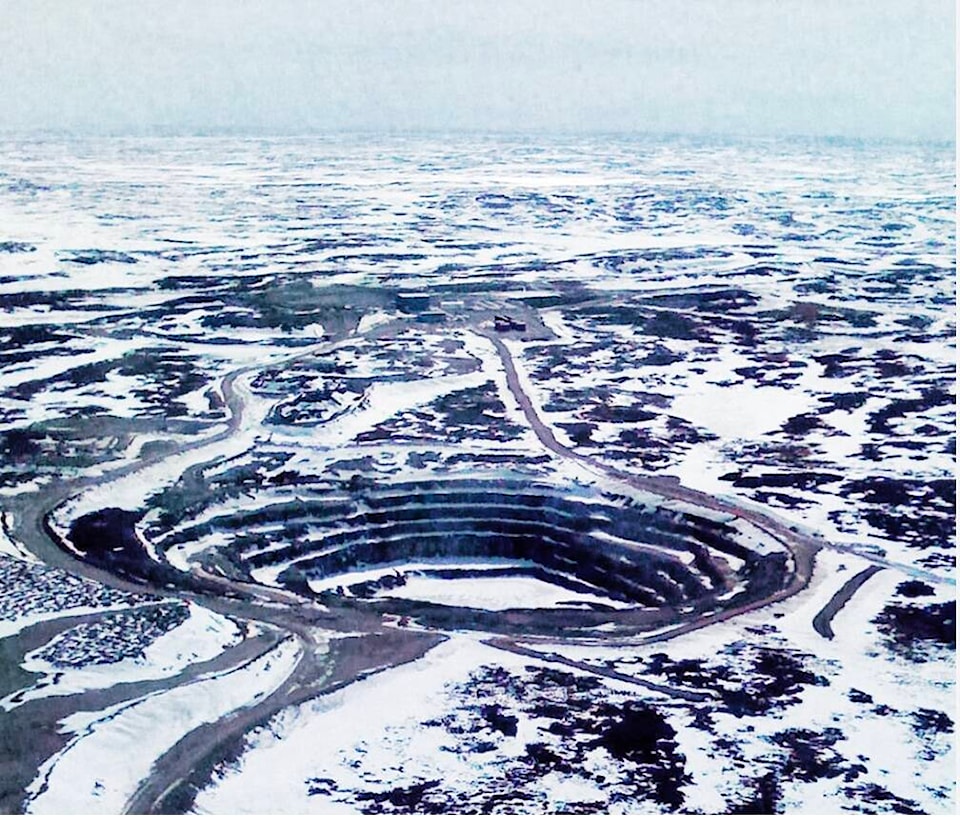A Nunavut judge has made a key ruling in a case where the Kitikmeot Inuit Association has been seeking for many years to have Dyno Nunavut Incorporated remove the explosives plant and restore the property at the former Jericho diamond mine.
The site, 250 km southeast of Kugluktuk, is partially owned by the Government of Canada and the Kitikmeot Inuit Association (KIA). The mine was in production from 2006 to 2008.
Dyno Nunavut Incorporated (Dyno) contends that the Government of Canada holds all the financial securities and is responsible for restoration of the entire Jericho site. Dyno further alleges that restoration and compensation requirements were addressed in a lease between the KIA and Tahera [Diamond Corporation], the original and now defunct operator of the mine, and in an Inuit Impact Benefits Agreement between the KIA and Tahera. Additionally, Dyno argues that Shear, as the most recent occupier of the land, is responsible for removal of the explosives plant and restoration of the site. However, Shear Diamonds, which took responsibility for the mine for a short period in 2010, is no longer a viable business and therefore cannot be held accountable.
Dyno also points to a 2014 court order that, the company maintains, transferred ownership of the explosives plant to the federal government.
“Dyno asserts that Canada has acted negligently in its management of the restoration project and the security funds over which it has control.”
With that in mind, the explosives company is trying to have the federal government added to the lawsuit as a third party. The Government of Canada wanted to be exempt from that, but Justice Susan Cooper, in a Jan. 11 decision from the Nunavut Court of Justice, ruled against the government.
She asserted that “the structure of the pleadings supports the conclusion that the assertion of ownership of the explosives plant lies with Canada and not Dyno is presented as a defence and not as an assertion of fact.”
She also decided that it’s unclear in the agreement between the parties on the question of ownership and who ultimately has responsibility of restoration.
“Even if it were established that Dyno is the current owner of the explosives plant, is it also clear and obvious that they are solely liable for restoration of the site, given that some of the contamination may have come from and may continue to come from adjacent land? In my view, it is not,” Cooper wrote in her judgement.
However, Dyno’s charge of negligence against the government, a clear duty of care must be established before negligence can be argued, according to Cooper. She found that “at this stage of the proceedings, it is not necessary for me to determine whether there is a duty of care and reasonable foreseeability of harm, and therefore, potential liability for negligence. The question which must be asked is whether it is plain and obvious that a duty of care cannot be established. I am unable to make such a conclusion.”
Regarding breach of trust and the alleged constructive trust, Cooper finds that this “area of environmental law and in particular, legal principles relating to responsibility for abandoned mines is an evolving area of the law. While the concept of a constructive trust in relation to restoration securities may not be well developed, I am unable to conclude that it is plain and obvious that the action cannot succeed.
“The law must be permitted to develop and respond to evolving social conditions and expectations,” Cooper added. “The common law develops incrementally and starts at the trial level. There is no question that Canada has responsibility or has taken on responsibility for some aspects of the mine site restoration. The issue is the extent and scope of that responsibility. It is preferable that the obligations of all the parties in relation to the mine site be determined in one proceeding. This promotes the goal of both efficiency and timeliness and avoids conflicting judgments.”
In sum, Cooper did not excuse the Government of Canada from being named in the lawsuit as a third party and awarded court costs to Dyno.
The matter will proceed to trial, where the remainder of the legal issues will be decided.
